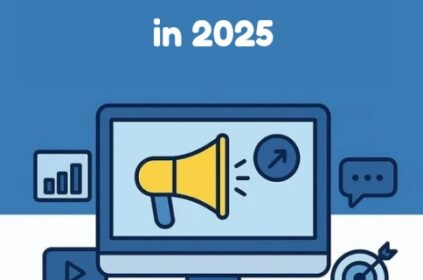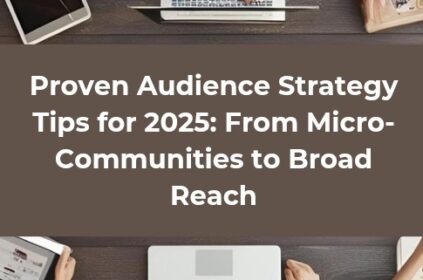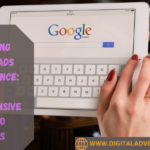Ever wondered how to transform passive scrollers into active clickers on your Facebook Ads? Are your Facebook Ads struggling to capture attention in a sea of digital noise?
In the ever-evolving landscape of digital advertising, understanding and mastering the nuances of platforms like Facebook is essential for you seeking to maximize your return on investment (ROI).
Among the myriad metrics used to gauge the effectiveness of Facebook Ads, one stands out as particularly crucial: Click-Through Rate (CTR).
Click-Through Rate (CTR) is a fundamental metric in online advertising that measures the percentage of people who click on a specific link, advertisement, or call-to-action (CTA) out of the total number of individuals who view the ad.
In the context of Facebook Ads, CTR represents the proportion of users who interact with an ad by clicking on it, relative to the total number of impressions (i.e., how many times the ad was displayed).
Why is CTR so significant in the realm of Facebook advertising? Put simply, it serves as a barometer of ad effectiveness and audience engagement.
A high CTR indicates that the ad resonates with the target audience, compelling them to take action and engage with the content. Conversely, a low CTR may signal a disconnect between the ad creative, messaging, and the preferences or needs of the audience.
The primary aim of this post is to equip you with actionable strategies to enhance your CTR on Facebook Ads. By delving into the intricacies of crafting compelling ad copy, designing visually captivating content, refining audience targeting, conducting A/B testing, and leveraging social proof, you can optimize your Facebook advertising campaigns to drive higher engagement, clicks, and ultimately, conversions.
Now that we’ve established the importance of CTR in Facebook advertising, let’s explore the factors that influence ad placement and engagement within the Facebook ecosystem. Are you ready? Let us dive in!
Understanding Facebook’s Ad Algorithm

To effectively boost your Click-Through Rate (CTR) on Facebook ads, it’s crucial to have a solid grasp of how Facebook’s ad algorithm operates.
Facebook employs a sophisticated algorithm to determine which ads are displayed to users and in what order they appear in their feeds.
Understanding the key factors that influence ad relevance and engagement within this algorithm is essential for optimizing your ad campaigns.
Overview of How Facebook’s Algorithm Determines Ad Placement
Facebook’s ad algorithm takes into account a multitude of factors when deciding which ads to show to users. These factors include:
#1. Relevance Score: Facebook assigns each ad a relevance score based on factors such as ad creative, audience targeting, and engagement metrics. Ads with higher relevance scores are more likely to be shown to users.
#2. Engagement Metrics: Facebook tracks various engagement metrics, including likes, comments, shares, and clicks, to gauge user interest in an ad. Ads that generate high levels of engagement are favored by the algorithm.
#3. Bid Amount: While not the sole determinant, the bid amount set by advertisers can influence ad placement. Higher bids may increase the likelihood of ad visibility, especially in competitive auctions.
#4. Ad Format: Facebook offers a variety of ad formats, including image ads, video ads, carousel ads, and more. The algorithm may prioritize certain ad formats based on user preferences and engagement patterns.
Factors Influencing Ad Relevance and Engagement
#1. Quality of Ad Creative: Compelling ad copy, eye-catching visuals, and clear calls-to-action (CTAs) can significantly impact ad performance. Ads that effectively communicate value propositions and resonate with the target audience are more likely to drive engagement.
#2. Audience Targeting: Targeting the right audience is crucial for maximizing ad relevance and engagement. Facebook provides robust targeting options, allowing advertisers to reach users based on demographics, interests, behaviors, and more.
#3. Ad Placement: Facebook offers various ad placement options, including News Feed ads, Stories ads, and Audience Network ads. Advertisers should select placement options that align with their campaign objectives and audience preferences.
Importance of CTR in Facebook’s Algorithm
Click-Through Rate (CTR) plays a significant role in Facebook’s ad algorithm. Ads with higher CTRs indicate greater relevance and engagement, which can positively influence ad performance and placement.
By focusing on strategies to improve CTR, advertisers can enhance their ad’s visibility and effectiveness within the Facebook ecosystem.
Now that we’ve explored how Facebook’s ad algorithm operates and the factors that influence ad relevance and engagement, let’s delve into actionable strategies for crafting compelling ad copy that captures users’ attention and drives clicks.
A Guide to Crafting Compelling Ad Copy
Effective ad copy is the cornerstone of a successful Facebook advertising campaign. Captivating headlines, persuasive language, and compelling calls-to-action (CTAs) can make all the difference in grabbing users’ attention and enticing them to click on your ads.
In this section, we’ll explore strategies for crafting ad copy that resonates with your target audience and drives higher Click-Through Rates (CTR).
1. Writing Attention-Grabbing Headlines
#1. Be Concise and Clear: Keep your headline concise and to the point. Clearly communicate the value proposition or benefit that users can expect from engaging with your ad.
#2. Create Urgency: Incorporate words or phrases that evoke a sense of urgency or exclusivity, encouraging users to take immediate action. Limited-time offers, discounts, or promotions can be effective in driving urgency.
#3. Ask Questions or Pique Curiosity: Pose questions or use curiosity-driven language to pique users’ interest and encourage them to learn more. Curiosity can be a powerful motivator for clicks.
Example: “Discover the Secret to Effortless Weight Loss Today!”
2. Using Persuasive Language and Calls-to-Action (CTAs)
#1. Highlight Benefits: Focus on the benefits or outcomes that users will experience by engaging with your ad. Use persuasive language to emphasize how your product or service can solve their pain points or fulfill their desires.
#2. Create a Sense of FOMO: Fear of Missing Out (FOMO) can be a powerful motivator for action. Incorporate CTAs that instill a sense of urgency or highlight exclusive offers to compel users to click.
#3. Use Actionable Language: Use action-oriented language in your CTAs to prompt users to take specific actions, such as “Shop Now,” “Learn More,” or “Sign Up Today.”
Example: “Don’t Miss Out! Claim Your Free Trial Now!”
3. Tailoring Ad Copy to the Target Audience’s Interests and Pain Points
#1. Know Your Audience: Conduct research to understand your target audience’s demographics, interests, and preferences. Tailor your ad copy to resonate with their interests, aspirations, and pain points.
#2. Personalize Messaging: Use dynamic ad creative and personalized messaging to create a sense of connection with your audience. Address their specific needs and challenges to make your ads more relevant and compelling.
#3. Test and Iterate: Experiment with different messaging approaches to see what resonates best with your audience. A/B testing can help you identify the most effective ad copy variations and optimize your campaigns for maximum impact.
By implementing these strategies for crafting compelling ad copy, you can increase the likelihood of capturing users’ attention and driving higher Click-Through Rates (CTR) on your Facebook Ads.
Next, we’ll explore the importance of designing visually captivating content to complement your ad copy and further enhance engagement.
Designing Eye-Catching Visuals to Boost Click-Through Rate
In addition to compelling ad copy, visually captivating content plays a crucial role in driving engagement and Click-Through Rates (CTR) on Facebook Ads.
High-quality images and videos have the power to capture users’ attention, convey your brand message, and compel them to take action.
In this section, we’ll explore strategies for designing visually appealing content that enhances the effectiveness of your Facebook advertising campaigns.
Importance of High-Quality Images and Videos in Facebook Ads
#1. Grab Attention: Visually striking images and videos are more likely to grab users’ attention as they scroll through their Facebook feeds. Use vibrant colors, engaging visuals, and dynamic content to stand out amidst the noise.
#2. Convey Brand Identity: Your visual content should reflect your brand identity and convey your unique value proposition. Consistent branding elements such as colors, fonts, and imagery help reinforce brand recognition and trust.
#3. Tell a Story: Use visuals to tell a compelling story or evoke emotions that resonate with your target audience. Whether it’s showcasing your product in action or highlighting customer testimonials, storytelling can create a deeper connection with users.
Tips for Selecting Visually Appealing Content
#1. Focus on Relevance: Choose images and videos that are relevant to your ad’s message and target audience. Avoid generic stock photos and opt for authentic, relatable visuals that speak to your audience’s interests and aspirations.
#2. Optimize for Mobile: With the majority of Facebook users accessing the platform on mobile devices, it’s essential to design visuals that are optimized for mobile viewing. Ensure your images and videos are clear, concise, and easily understandable on smaller screens.
#3. Experiment with Formats: Facebook offers a variety of ad formats, including single image ads, carousel ads, slideshow ads, and video ads. Experiment with different formats to see which ones resonate best with your audience and drive higher engagement.
Incorporating Branding Elements Effectively
#1. Logo Placement: Incorporate your brand logo strategically within your visual content to increase brand visibility and recognition. Ensure that your logo is prominently displayed but doesn’t overshadow the main message or focal point of the ad.
#2. Consistent Visual Style: Maintain a consistent visual style across all your ad creatives to reinforce brand identity and create a cohesive brand experience for users. Use consistent colors, fonts, and design elements to build brand recognition.
#3. Call-to-Action (CTA) Integration: Seamlessly integrate your call-to-action (CTA) within your visual content to prompt users to take action. Whether it’s a “Shop Now” button or a “Learn More” overlay, make sure your CTA is clear, prominent, and visually appealing.
By following these tips for designing eye-catching visuals, you can enhance the visual appeal of your Facebook Ads and increase engagement with your target audience.
Next, we’ll explore the importance of targeting the right audience to maximize ad relevance and Click-Through Rates (CTR).
Targeting the Right Audience

Effective audience targeting is paramount to the success of your Facebook advertising campaigns. By reaching the right audience with your ads, you can ensure that your message resonates with those most likely to engage and convert.
In this section, we’ll explore strategies for leveraging Facebook’s audience targeting features to maximize ad relevance and Click-Through Rates (CTR).
Utilizing Facebook’s Audience Targeting Features
#1. Demographic Targeting: Facebook allows advertisers to target users based on various demographic factors such as age, gender, location, education, and occupation. Use demographic targeting to reach users who fit your ideal customer profile.
#2. Interest Targeting: Tap into Facebook’s vast wealth of user data to target users based on their interests, hobbies, and activities. Interest targeting allows you to tailor your ads to specific niche audiences who are likely to be interested in your products or services.
#3. Behavioral Targeting: Facebook also offers behavioral targeting options that allow advertisers to reach users based on their past behaviors and interactions on the platform. Target users who have exhibited specific purchasing behaviors or engagement patterns relevant to your business.
Creating Custom and Lookalike Audiences
#1. Custom Audiences: Upload your own customer lists, such as email addresses or phone numbers, to create custom audiences on Facebook. Targeting custom audiences allows you to reach existing customers or prospects with tailored messaging based on their relationship with your brand.
#2. Lookalike Audiences: Expand your reach by creating lookalike audiences that share similar characteristics and behaviors to your existing customer base. Facebook’s lookalike audience feature uses machine learning algorithms to identify users who are likely to be interested in your offerings based on their similarity to your existing customers.
Experimenting with Different Audience Segments
#1. Segmentation: Segment your audience into different groups based on various criteria such as demographics, interests, or buying behavior. Experiment with targeting different audience segments with tailored ad creatives and messaging to see which segments yield the highest Click-Through Rates (CTR) and conversions.
#2. Iterative Testing: Continuously test and refine your audience targeting strategies to optimize campaign performance over time. Monitor key metrics such as CTR, conversion rates, and return on ad spend (ROAS) to identify top-performing audience segments and adjust your targeting accordingly.
By leveraging Facebook’s audience targeting features, creating custom and lookalike audiences, and experimenting with different audience segments, you can maximize the relevance of your ads and increase Click-Through Rates (CTR) among your target audience.
Next, we’ll explore the importance of A/B testing and optimization in fine-tuning your Facebook advertising campaigns for optimal results.
A/B Testing and Optimization
A/B testing, also known as split testing, is a powerful technique used by online advertisers to compare two or more variations of an ad to determine which one performs better.
By systematically testing different elements of your Facebook ads and optimizing based on performance data, you can refine your campaigns and improve Click-Through Rates (CTR) over time.
In this section, we’ll explore the importance of A/B testing and share strategies for optimizing your Facebook advertising campaigns.
Importance of Split Testing Ad Variations
#1. Identifying High-Performing Elements: A/B testing allows you to identify which ad elements, such as headlines, images, ad copy, and CTAs, resonate most with your audience and drive higher engagement.
By pinpointing the most effective components, you can optimize your ads for maximum impact.
#2. Iterative Improvement: A/B testing enables you to iterate and refine your ad creatives and targeting strategies over time. By continuously testing and optimizing, you can uncover new insights and refine your campaigns to improve performance and drive better results.
What Are the Key Elements to Test?
#1. Headlines: Experiment with different headline variations to see which ones capture users’ attention and drive higher Click-Through Rates (CTR). Test different messaging angles, lengths, and formats to determine the most effective approach.
#2. Visuals: Test different images, videos, and ad formats to identify visuals that resonate best with your target audience. Experiment with different creative elements, such as colors, imagery, and compositions, to determine which ones drive higher engagement.
#3. Ad Copy: Test variations of your ad copy, including messaging, tone, and calls-to-action (CTAs), to see which ones drive the highest Click-Through Rates (CTR) and conversions. Experiment with different language, offers, and value propositions to optimize your messaging.
#4. Audience Targeting: A/B test different audience segments, demographics, interests, and behaviors to identify the most responsive audience segments for your ads. Experiment with different targeting options to refine your audience targeting and improve ad relevance.
Analyzing Results and Optimizing Campaigns

#1. Track Key Metrics: Monitor key performance metrics such as Click-Through Rate (CTR), conversion rate, cost per click (CPC), and return on ad spend (ROAS) to evaluate the effectiveness of your ad variations.
#2. Identify Winning Variations: Analyze the results of your A/B tests to identify winning ad variations that outperform others in terms of engagement and conversions. Allocate more budget and resources to the top-performing variations to maximize results.
#3. Iterative Optimization: Use the insights gained from your A/B tests to iterate and optimize your ad campaigns. Implement the learnings from successful ad variations to inform future campaign strategies and continually improve performance over time.
By incorporating A/B testing into your Facebook advertising strategy and systematically optimizing your ad campaigns based on performance data, you can refine your approach, improve Click-Through Rates (CTR), and achieve better results over time.
Let us proceed to explore the importance of leveraging social proof and user engagement to enhance ad performance.
Leveraging Social Proof and User Engagement
Social proof, in the form of testimonials, reviews, and user-generated content, can significantly influence consumer behavior and drive engagement with your Facebook ads.
By incorporating social proof elements and encouraging user engagement, you can enhance ad performance and increase Click-Through Rates (CTR) on your Facebook Ads.
In this section, we’ll explore strategies for leveraging social proof and fostering user engagement to amplify the effectiveness of your ad campaigns.
Incorporating Social Proof Elements
#1. Customer Testimonials: Feature testimonials from satisfied customers to provide social proof of your product or service’s value. Highlight specific benefits or outcomes experienced by real customers to build trust and credibility with your audience.
#2. User Reviews and Ratings: Showcase positive reviews and ratings from satisfied customers to demonstrate the quality and reliability of your offerings. Encourage customers to leave reviews and ratings on your Facebook Page to increase social proof and credibility.
Encouraging User Engagement
#1. Interactive Content: Create interactive ad experiences that encourage user engagement, such as polls, quizzes, or interactive videos. Interactive content not only captivates users’ attention but also encourages them to actively participate and engage with your brand.
2. Call-to-Action (CTA) Encouragement: Prompt users to engage with your ad by including clear calls-to-action (CTAs) that encourage likes, comments, shares, or clicks. Encourage users to share their thoughts, experiences, or opinions in the comments section to foster community engagement.
Strategies for Fostering Community Interaction
#1. Respond to Comments: Actively monitor and respond to comments on your ads to engage with users and address any questions or concerns they may have. Engaging with users in the comments section demonstrates authenticity and builds rapport with your audience.
#2. Encourage User-Generated Content: Encourage users to create and share their own content related to your brand or products. User-generated content not only serves as social proof but also fosters a sense of community and belonging among your audience.
Example: Run a user-generated content contest where users submit photos or videos featuring your product for a chance to win prizes or recognition. Showcase the best submissions in your ads to amplify social proof and encourage further engagement.
By being careful to incorporating social proof elements, encouraging user engagement, and fostering community interaction, you can enhance the effectiveness of your Facebook ads and increase Click-Through Rates (CTR) by leveraging the power of social influence and user engagement.
Next, we’ll explore the importance of monitoring performance metrics and optimizing your ad campaigns based on insights gained from data analysis.
How to Monitor Performance Metrics

Effective monitoring of performance metrics is essential for evaluating the success of your Facebook advertising campaigns and making data-driven decisions to optimize campaign performance.
By tracking key performance indicators (KPIs) and analyzing campaign data, you can identify areas for improvement, refine your targeting and messaging, and ultimately increase Click-Through Rates (CTR) on your ads.
In this section, we’ll explore strategies for monitoring performance metrics and optimizing your Facebook ad campaigns based on insights gained from data analysis.
Tracking CTR and Other Key Performance Indicators (KPIs)
#1. Click-Through Rate (CTR): Monitor CTR to gauge the effectiveness of your ad creative, messaging, and targeting. A high CTR indicates that your ads are resonating with your audience and driving engagement.
#2. Conversion Rate: Track conversion rate to measure the percentage of users who take a desired action, such as making a purchase or signing up for a newsletter, after clicking on your ad. A high conversion rate indicates that your ads are effectively driving user actions.
#3. Cost per Click (CPC): Monitor CPC to assess the cost-effectiveness of your ad campaigns. A lower CPC indicates that you’re getting more clicks for your advertising budget, maximizing ROI.
#4. Return on Ad Spend (ROAS): Calculate ROAS to measure the revenue generated from your ad campaigns relative to the amount spent on advertising. A high ROAS indicates that your ads are generating a positive return on investment.
Tools and Methods for Monitoring Ad Performance
#1. Facebook Ads Manager: Utilize Facebook Ads Manager to track and analyze the performance of your ad campaigns in real-time. Monitor metrics such as CTR, conversion rate, CPC, and ROAS to assess the effectiveness of your ads and make informed decisions.
#2. Analytics Platforms: Integrate Facebook Ads data with analytics platforms such as Google Analytics or Adobe Analytics to gain deeper insights into user behavior and attribution. Use advanced tracking and attribution models to measure the impact of your ads across different channels and touchpoints.
Adjusting Strategies Based on Performance Insights
#1. Iterative Optimization: Use performance insights to iteratively optimize your ad campaigns for better results. Identify underperforming ad creatives, targeting options, or messaging strategies, and make adjustments to improve performance.
#2. Budget Allocation: Allocate budget to top-performing ad campaigns and ad sets based on performance metrics such as CTR, conversion rate, and ROAS. Shift budget away from underperforming campaigns and reallocate resources to maximize ROI.
#3. Continuous Experimentation: Continuously experiment with different ad creatives, messaging variations, and targeting options to identify what resonates best with your audience. Test new ideas and hypotheses to continually improve campaign performance over time.
By actively monitoring performance metrics, leveraging analytics tools, and adjusting your ad strategies based on performance insights, you can optimize your Facebook advertising campaigns for maximum effectiveness and increase Click-Through Rates (CTR) on your ads.
Conclusion
In the dynamic world of Facebook advertising, maximizing Click-Through Rates (CTR) is essential for driving engagement, conversions, and ultimately, achieving your advertising goals.
Throughout this blog post, we’ve explored actionable strategies for boosting CTR on your Facebook Ads, from crafting compelling ad copy and designing visually captivating content to targeting the right audience and conducting A/B testing and optimization.
In conclusion, achieving a high Click-Through Rate (CTR) on your Facebook Ads requires a combination of compelling ad creative, strategic audience targeting, ongoing experimentation, and data-driven optimization.
By implementing the strategies outlined in this blog post and continually refining your approach, you can maximize the effectiveness of your Facebook advertising campaigns and drive better results.
Remember, the digital advertising landscape is constantly evolving, so don’t be afraid to try new ideas, test different strategies, and adapt to changes in consumer behavior and platform algorithms. By embracing a mindset of continuous improvement and innovation, you can stay ahead of the curve and achieve success in your Facebook advertising endeavors.
Thank you for reading, and best of luck with your Facebook advertising campaigns!










